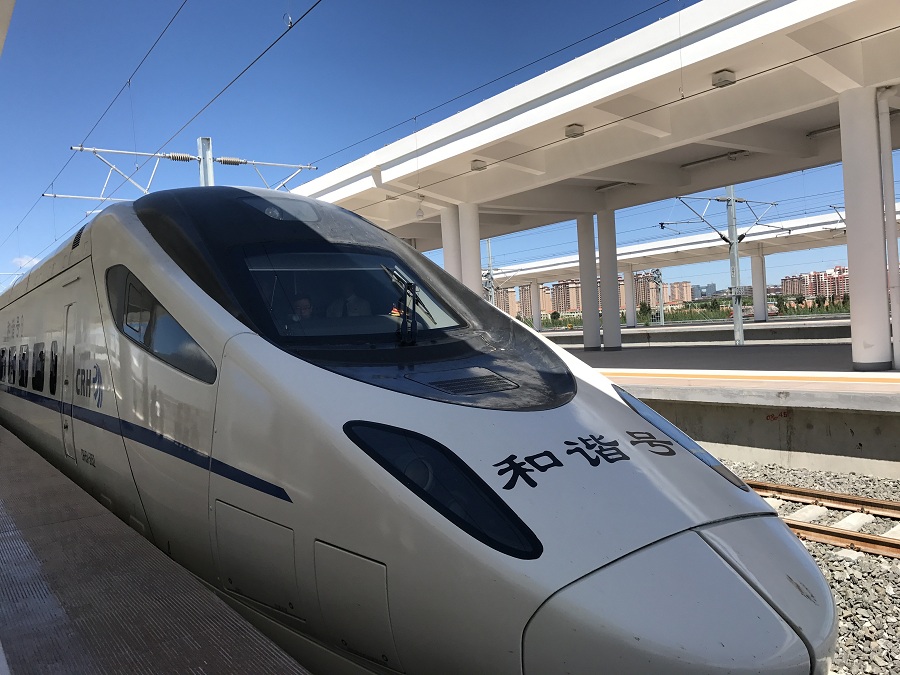Desert control expert safeguards Silk Road
By Jiang Wei (chinadaily.com.cn)
Updated: 2015-10-14
Saving Yueyaquan from being buried
Yueyaquan, or crescent lake, is a crescent-shaped lake in an oasis in Dunhuang. In 2007, the lake was about to be buried by sand. At that time, the sand dunes in the north were moving southward, while the sand dunes in the south were moving northward. They have moved eight to ten meters in 15 years.
"A poem in the Tang Dynasty (618-907AD) mentioned that the sand on the dunes surrounding Yueyaquan slide down at day time and are blown back at night, so it can survive hundreds of years," Qu said. "The law of nature must have been broken by human factors in these years."
He began field research and found that the wind speed largely decreases when the wind comes to Yueyaquan. The culprit is a block of houses and forests northeast of the lake. The trees are as high as 20 meters.
In 2010, the houses were torn down and the trees were chopped off. Wind began to blow sand dunes away and the Crescent Lake was saved. Even his monitoring wooden poles that were buried by sand resurfaced.
In 2014, the Dunhuang municipal government wanted to build a cultural industry park northeast of the crescent lake and invited Qu to do research on its feasibility. "The government officials assumed that I will give positive feedback, but I disagreed with the project after my research," Qu said. "The park will block the east wind and Yueyaquan will be buried by sand blown by the northwest wind."
Government officials couldn't accept his opinion at first and threatened to drive Qu out of Dunhuang. But he explained to them his scientific deductions in plain language again and again. "We will be criminals in history if we build the cultural industry park," Qu warned. Finally, the officials got the point and the project was abandoned. He won their trust and was praised as a real scientist.
Fending off sand along the Qinghai-Tibet Railway
The Qinghai–Tibet Railway is a high-elevation railway that connects Xining, capital of Northwest China's Qinghai Province, to Lhasa, capital of southwest China's Tibet Autonomous Region. The length of the railway is 1,956 kilometers.
In 2003, the railway, which was under construction, was endangered by sand. Qu said that the wind will probably be a huge safety problem for the railway. Data showed that about 270 kilometers of the railway were prone to wind damage. His opinion was taken seriously by the Ministry of Railways.
Qu and his students put more than 200 observation spots along the railway. They found that sand comes from different sources, so a single measure is not enough to prevent sand. They established a comprehensive system, including building fences, digging tunnels and planting trees. After ten years, the sand along the railway was reduced.
The 56-year-old scientist has worked in Dunhuang for nearly 30 years. Every year, he strides in the desert for at least 300 days. He lives in his dormitory at Dunhuang Gobi Desert Research Station.
In his 10 square meter dorm, there is a single bed, a radio, a suitcase and a respirator. He said he never watches TV because he has no time. The suitcase is for him to set off any time. The respirator is a necessity. Due to a car accident when he was doing field research, his breath often stops while he is asleep. Now he must wear it when he goes to bed.
"Over the years, I have had many chances to change jobs, but I refused, and I don't regret it. I fell in love with the desert at first sight and I want to study it. I feel happy that I can pursue my career here," he said.

High-speed train debuts in Inner Mongolia
A bullet train departed Hohhot East Railway Station for Ulanqab marking the start of high-speed rail services using Inner Mongolia’s first newly-laid high-speed railway on Aug 3.
